Last Updated on March 30, 2023
Incontinence can suddenly become an issue. It doesn’t always develop over time, it doesn’t always give a warning.
Sometimes, it just pops up in your (or a loved one’s) life.
If you or a family member is dealing with incontinence – or if you have a child with bed-wetting tendencies – it’s really not a big deal. You just need a few tools to deal with the issue.
We suggest one or both of the products below to deal with adult incontinence (or a bed-wetting child). They’re both affordable, and effective!
They can easily be washed and used over and over again.
Incontinence Bed Pads
A bed pad is exactly what it sounds like – a pad that goes on top of the bed. It’s basically a diaper that you don’t wear.
A bed pad placed on top of the mattress – and under the fitted sheet – absorbs urine (and other liquids), and does not allow it to pass through to the mattress.
Since it gets trapped inside of the pad, it doesn’t pool on the surface of the bed – which makes the sleeper uncomfortable.
If you only choose one tool for the job, we recommend going with a bed pad – like the Gorilla Grip Slip-Resistant Bed Pads.
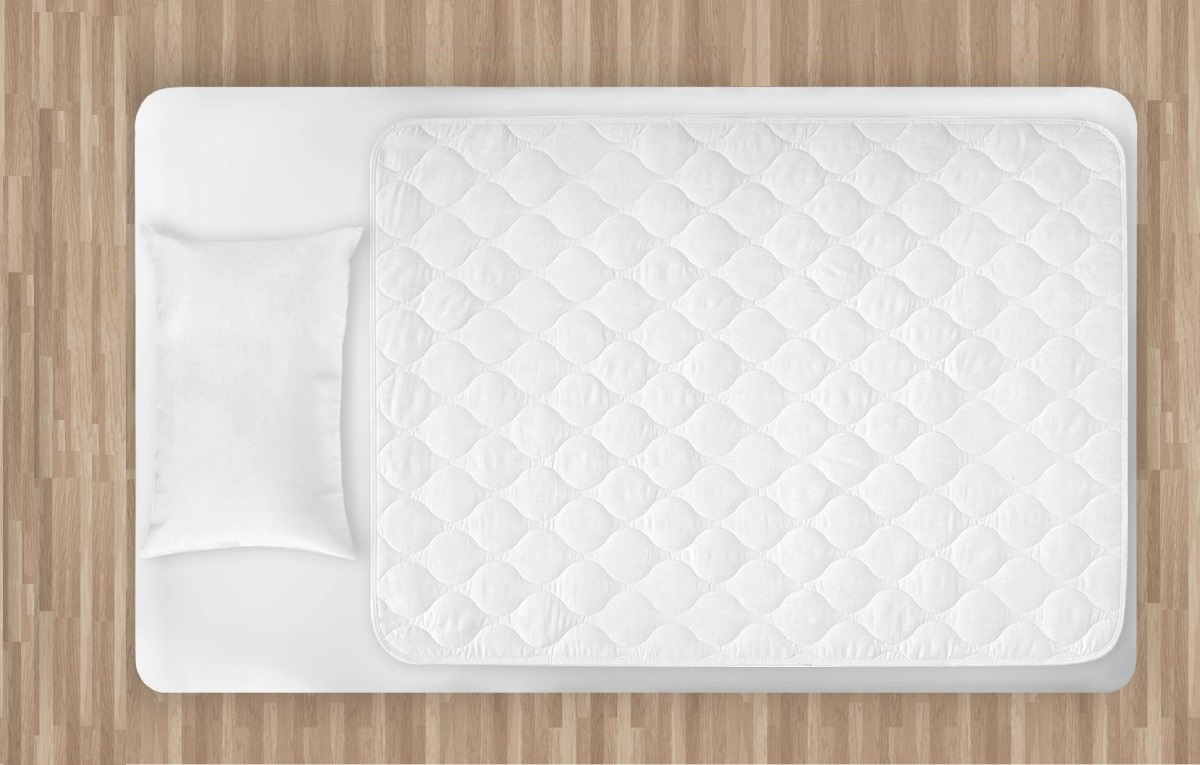
How to use a bed pad
The instructions are actually very simple – just place the pad under (or on top of) the fitted sheet.
Most pads will cover from the chest, and down to the foot of the bed. So, lay the pad flush with the foot of the bed, replace the fitted sheet, and your installation job is done.
After that, just wash when necessary.
Features
The Gorilla Grip incontinence bed pad holds up to 8 cups of liquid. It has a quilted top layer for comfort, additional layers of absorbent materials on the inside, a slip-resistant layer on the bottom, and a leak-proof edge.
It can be re-used and washed up to 300 times.
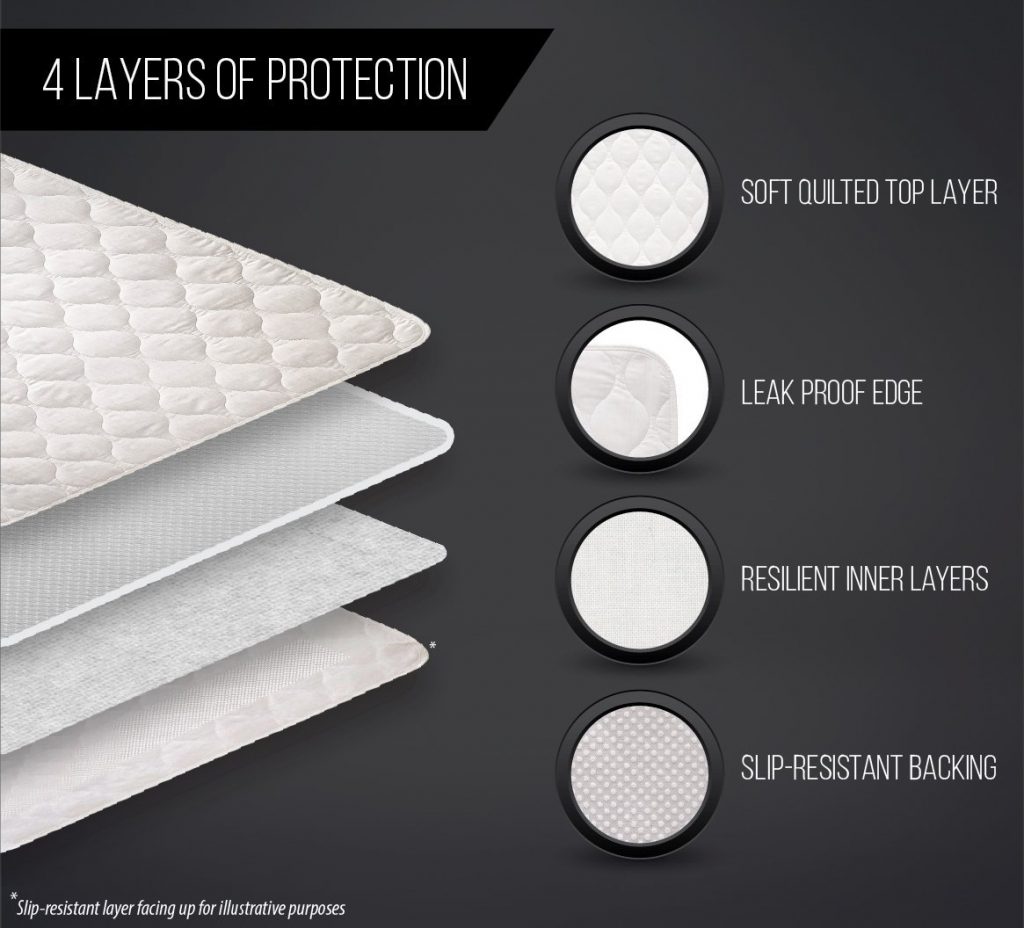
Sizing
Incontinence pads always measure smaller than your actual bed. The two common sizes available are 34″ x 36″, and 34″ x 52″. You can also find 21″ x 21″, but they’re not as common.
The smaller size will fit Twin beds, while the larger size will work for Full to King.
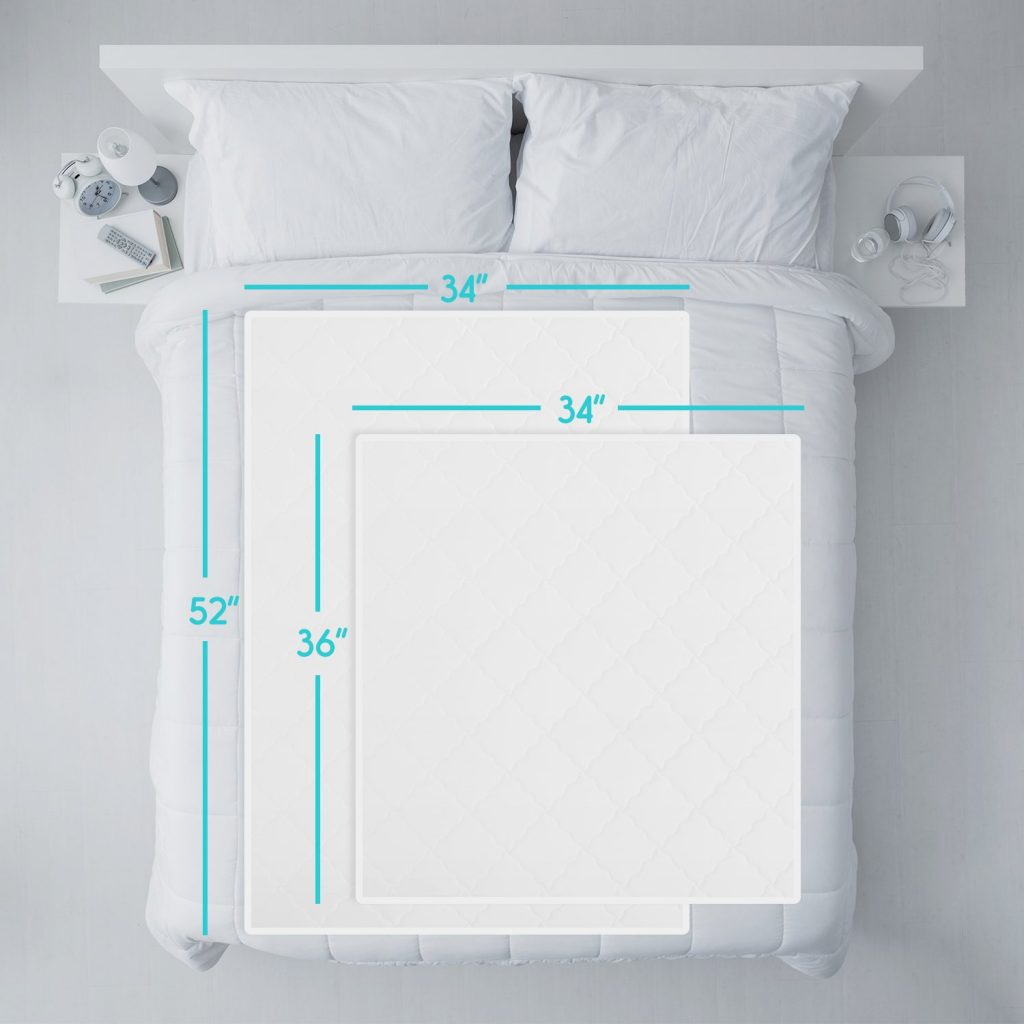
A bed pad works great, especially when paired with…
A mattress protector
A bed pad is definitely the first option, but when paired with a mattress protector, they make an excellent tandem.
A mattress protector works like a pillow protector. It encases the entire mattress and zips shut.
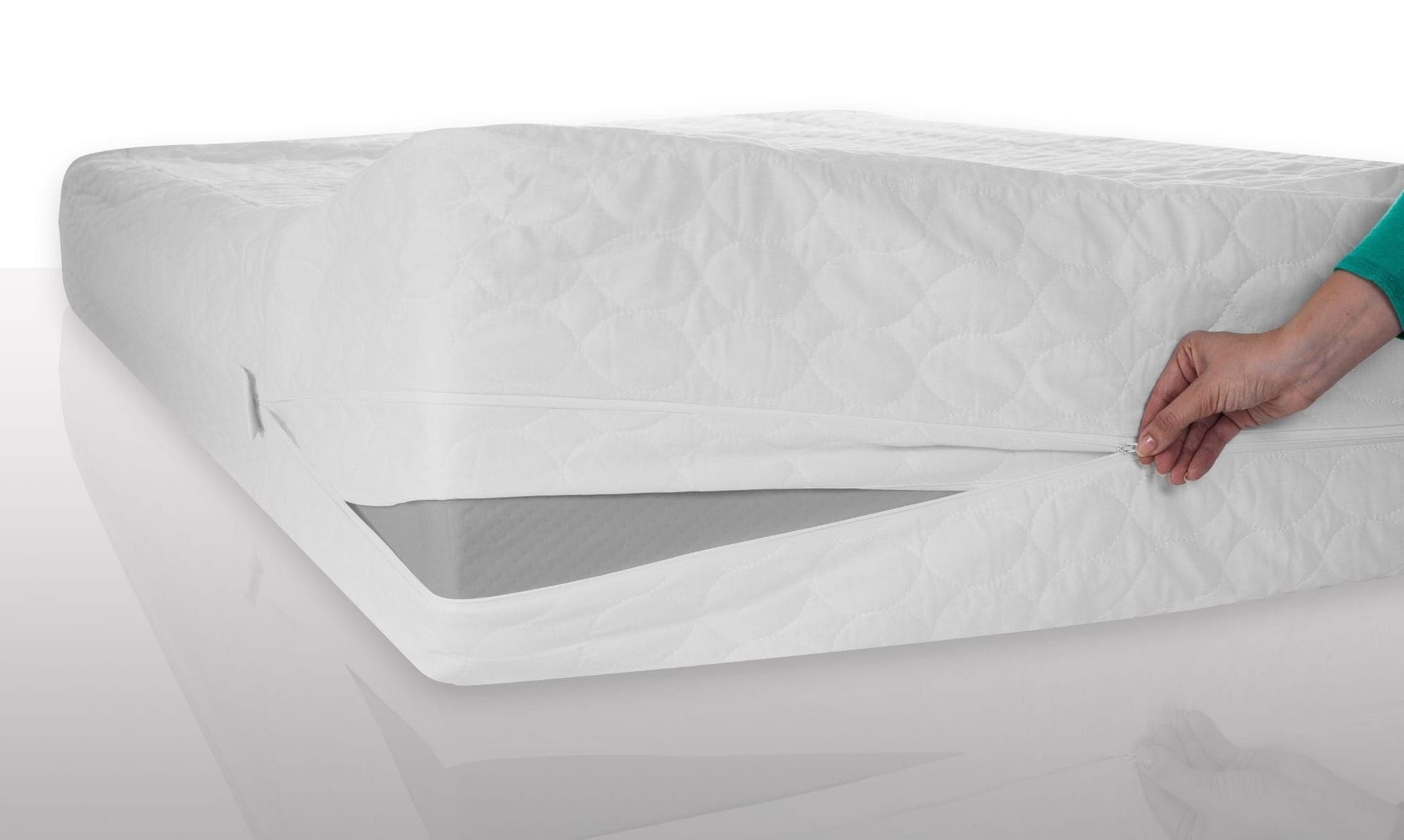
Whereas the bed pad just covers a portion of the bed, a protector encases the entire mattress – both top and bottom.
A mattress protector doesn’t absorb liquids – it just doesn’t let them pass through into the mattress. So while you can certainly use a protector by itself to protect the mattress, the liquid will just sit on top of the bed, with nowhere to go.
Sleeping on a wet mattress is never comfortable!
At the same time, a bed pad absorbs and holds on to urine, so why the need for a mattress protector? Don’t they overlap?
Yes, they do. But a mattress protector serves two purposes.
1.) Cheap insurance in case a bed pad fails.
2.) It protects against bed bugs, dust mites, etc.
Why not just use a waterproof mattress pad?
This is certainly an option. A waterproof mattress pad works very similarly to a bed pad. It will also absorb liquids into the materials inside, and keep them from reaching the mattress.
It will do the job, just not very efficiently!
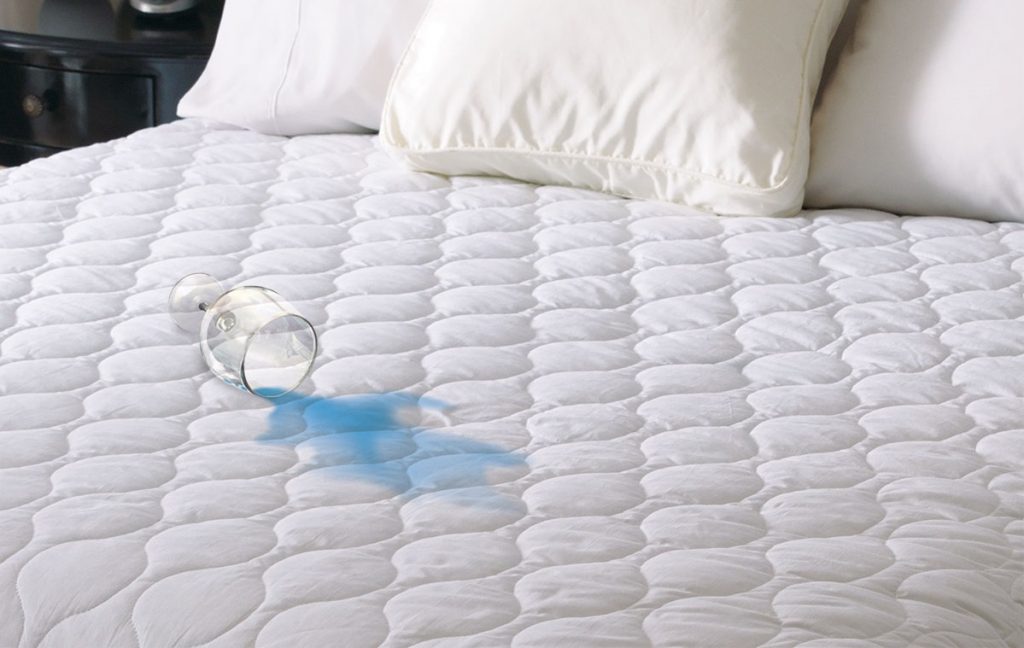
The main issue here is that you’ll probably want to wash anything that gets urine-soaked.
The problem with frequent washing of a mattress pad is its sheer size! Washing a mattress pad multiple times a week is time-consuming, and work-intensive.
A waterproof mattress pad can be effective, it’s just not very efficient.
What happens if you ignore incontinence?
Assuming diapers aren’t being used, leaving urine on a mattress creates a few problems to deal with, both momentarily, as well as down the line.
Clean up – Laying on top of a wet bed isn’t very pleasing, and will usually result in someone having to clean up the mess.
The odor – Urine doesn’t exactly smell like perfume. If absorbed into the mattress, the odor can linger for a while.
Mattress damage – The stains on the surface are just cosmetic, but any type of liquid will warp and damage the insides of a mattress.
An isolated incident won’t do much, but recurring episodes will definitely decrease the life of a mattress.
Some additional tips
Using a bed pad is fairly easy and straightforward, but here are a few more tips to make the transition as easy as possible.
How do you wash a bed pad?
Refer to the instructions on the package for the manufacturer-recommended method. In general, however, you can machine wash in cold water, using a mild detergent, and tumble dry on low.
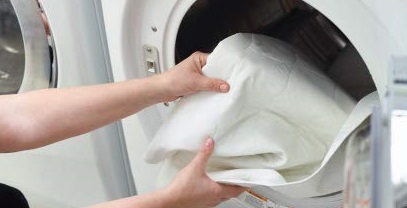
Getting rid of the urine odor
While a bed pad can be washed, neutralizing or removing the urine odor can be difficult at times. If you find that to be an issue, add a bit of chlorine-free bleach to your washing machine.
That should do the trick.
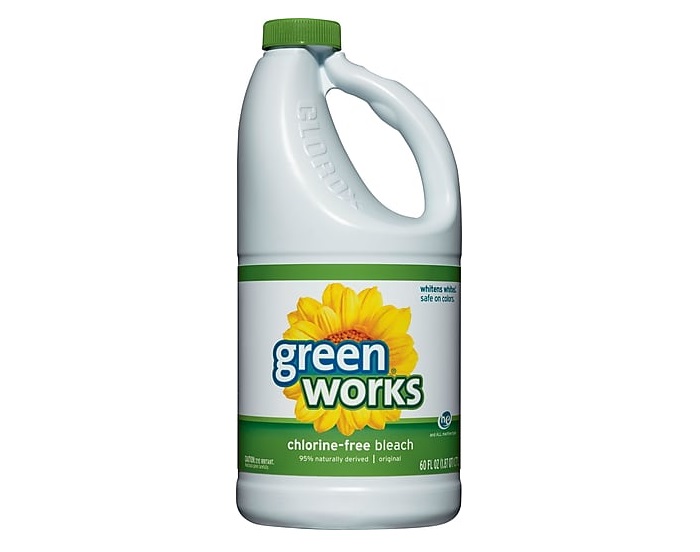
Over or under the fitted sheet?
Earlier in this article, we recommended placing a bed pad under the fitted sheet.
However, you can certainly place the pad on top of the bed as well. This placement will just soil the bed pad while keeping your sheets clean.
The Gorilla Grips pad does have a slip-resistant backside, but in our experience, it tends to hold much better against the smooth and shimmery surface of a mattress, than with the textured surface of a sheet.
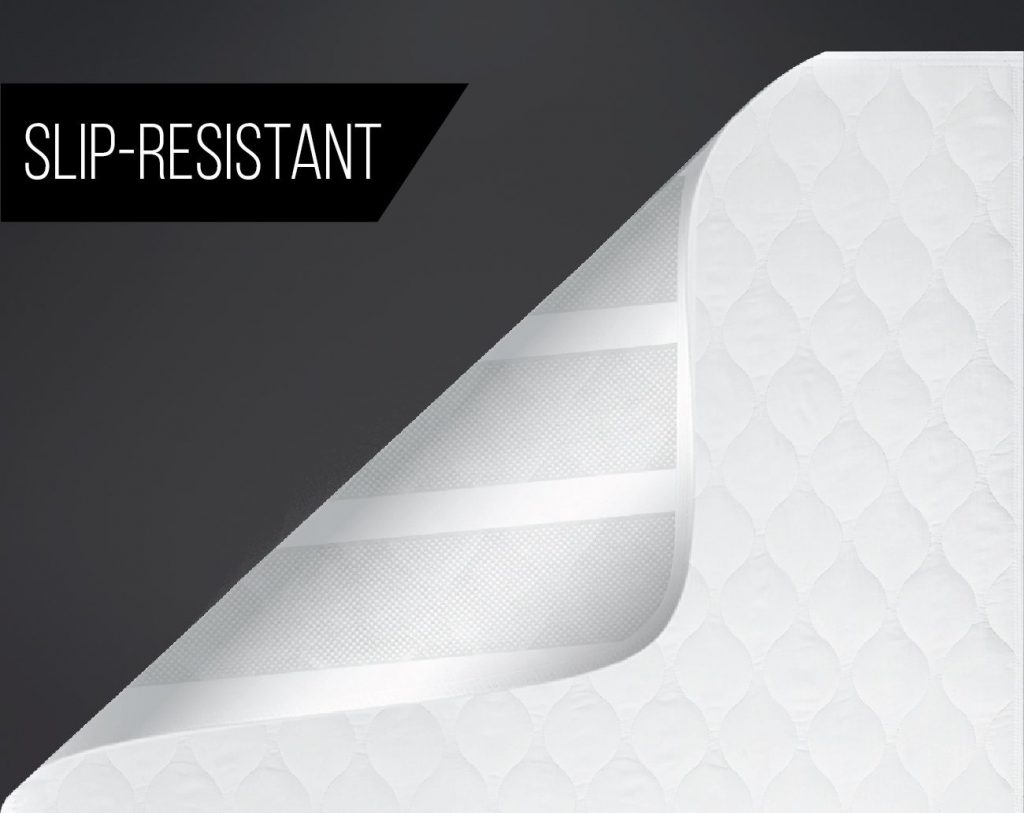
Laying directly on the pad also causes it to fold over, or bunch up – whereas it stays flat underneath the fitted sheet.
So while you can place it on top of the bed, if you find that it moves around too much, place it under the fitted sheet for worry-free performance.
Is a bed pad safe to use with children?
Children yes – babies no!
Since the pad can bunch up and/or cover a child’s face, a bed pad is not intended to be used for babies. The age recommendation is 2 years or older.
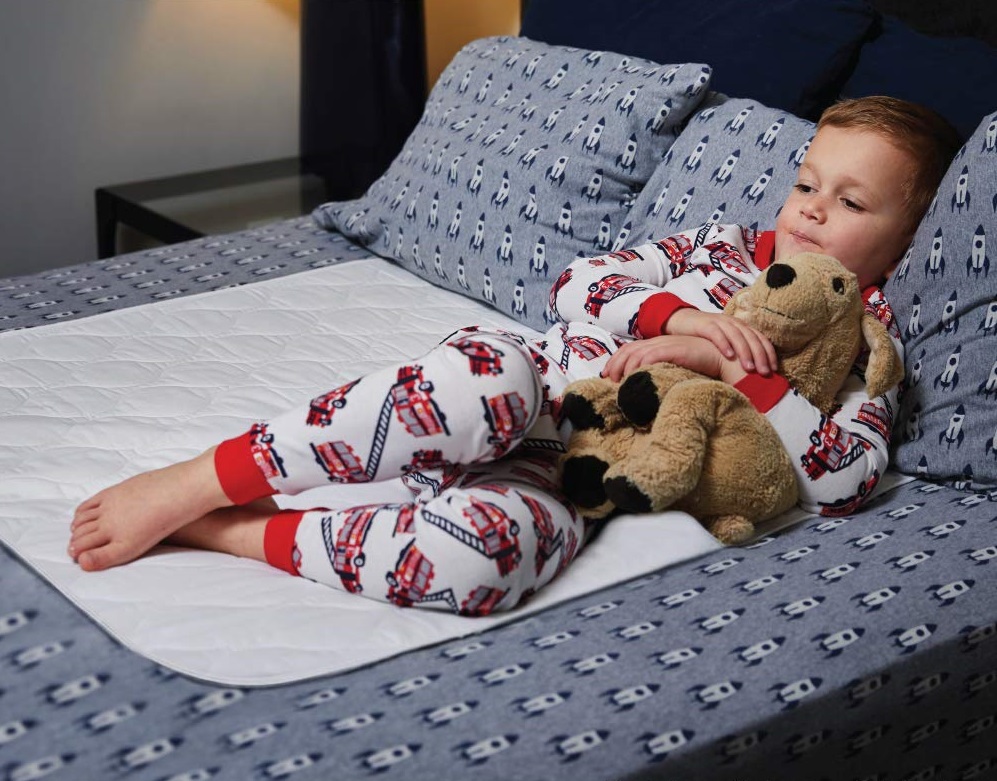
Final thoughts
Regardless of which bed pad model you decide to go with, keep in mind that most pads have a surface made of polyester fabric – which tends to hold on to heat.
If the person who will be sleeping on top of the bed is sensitive to a warm bed, we recommend placing the pad underneath the fitted sheet and using a 100% cotton sheet set.
Cotton sheets breathe, while polyester does not. Placing polyester on top of polyester can trap a lot of unwanted heat.
